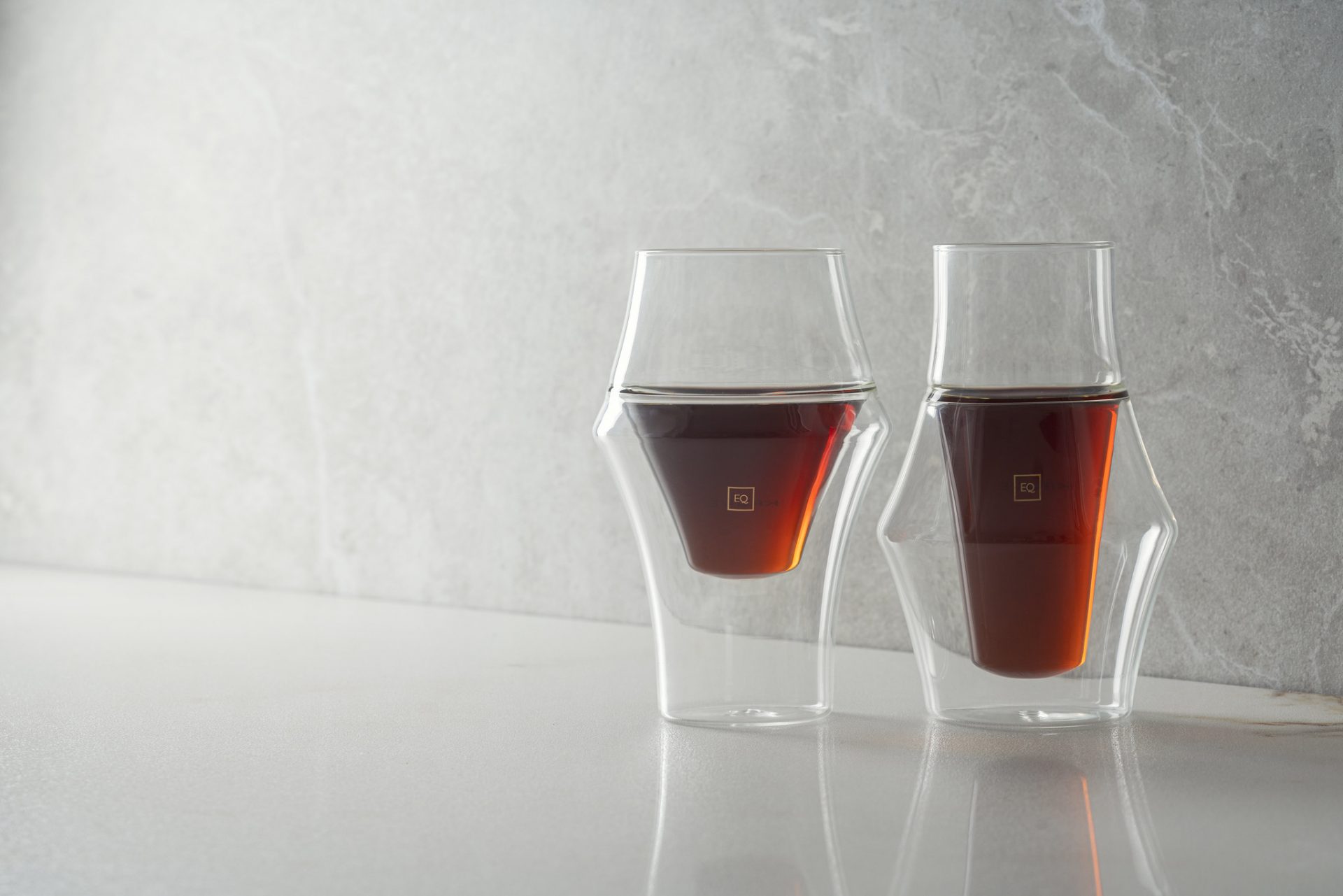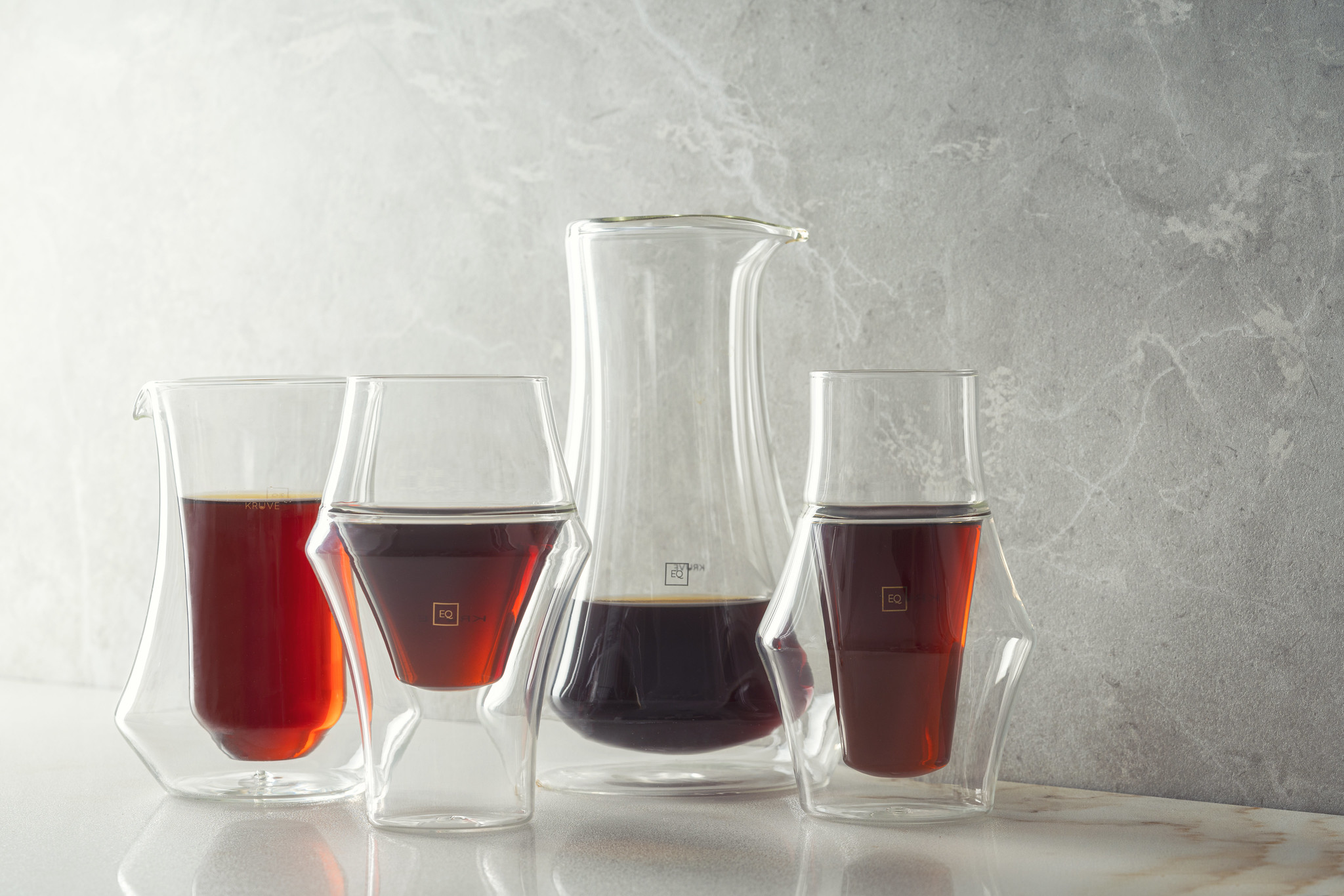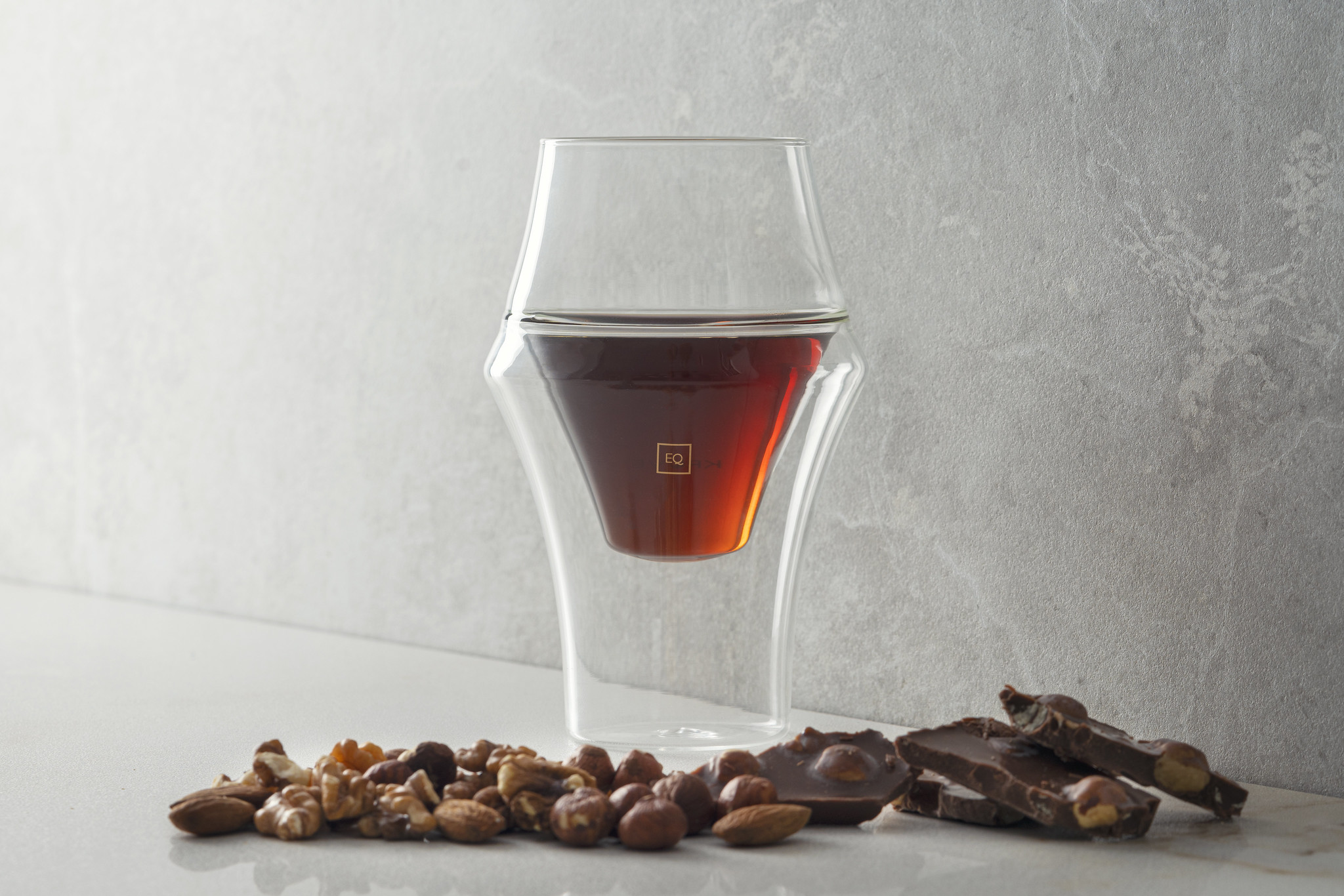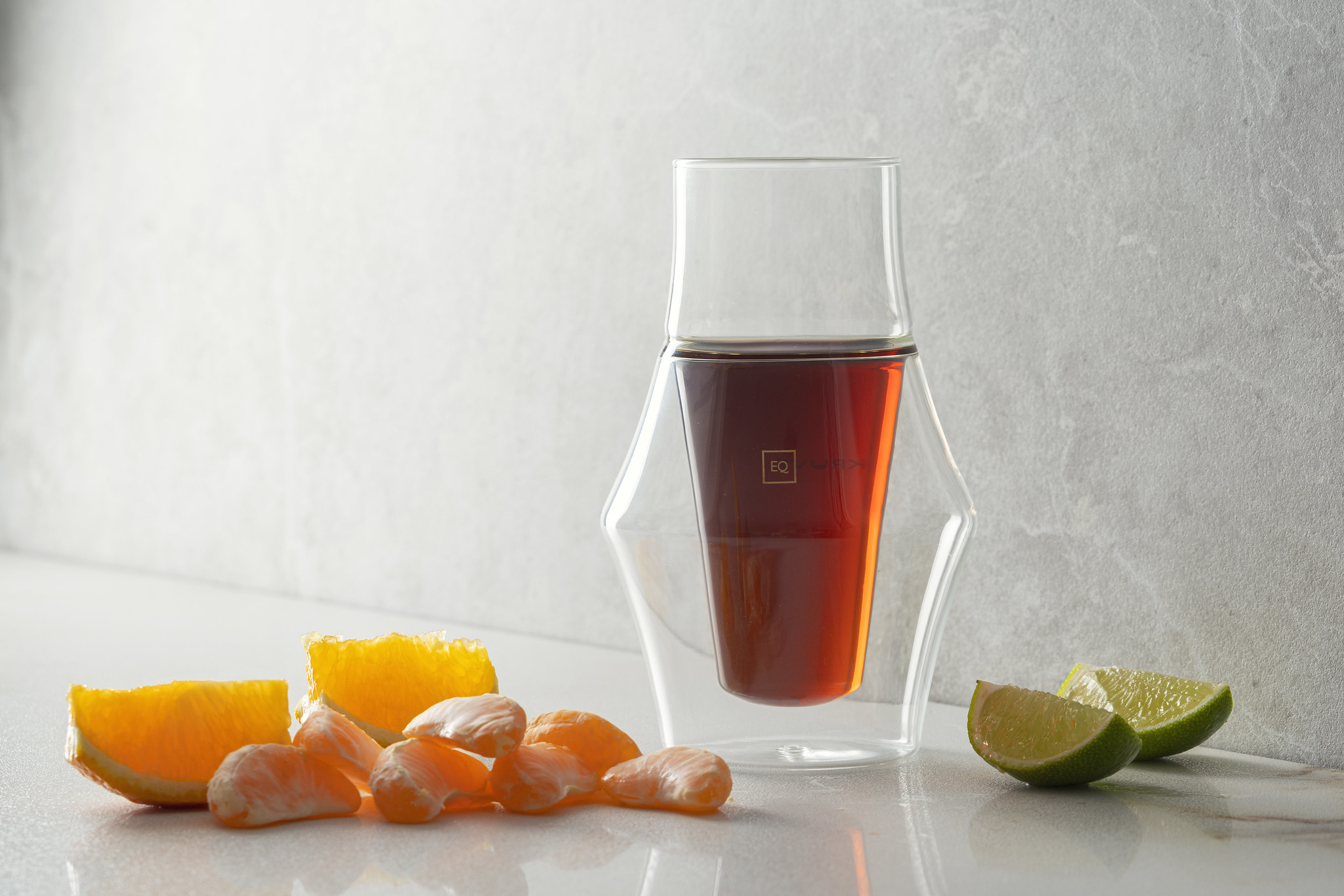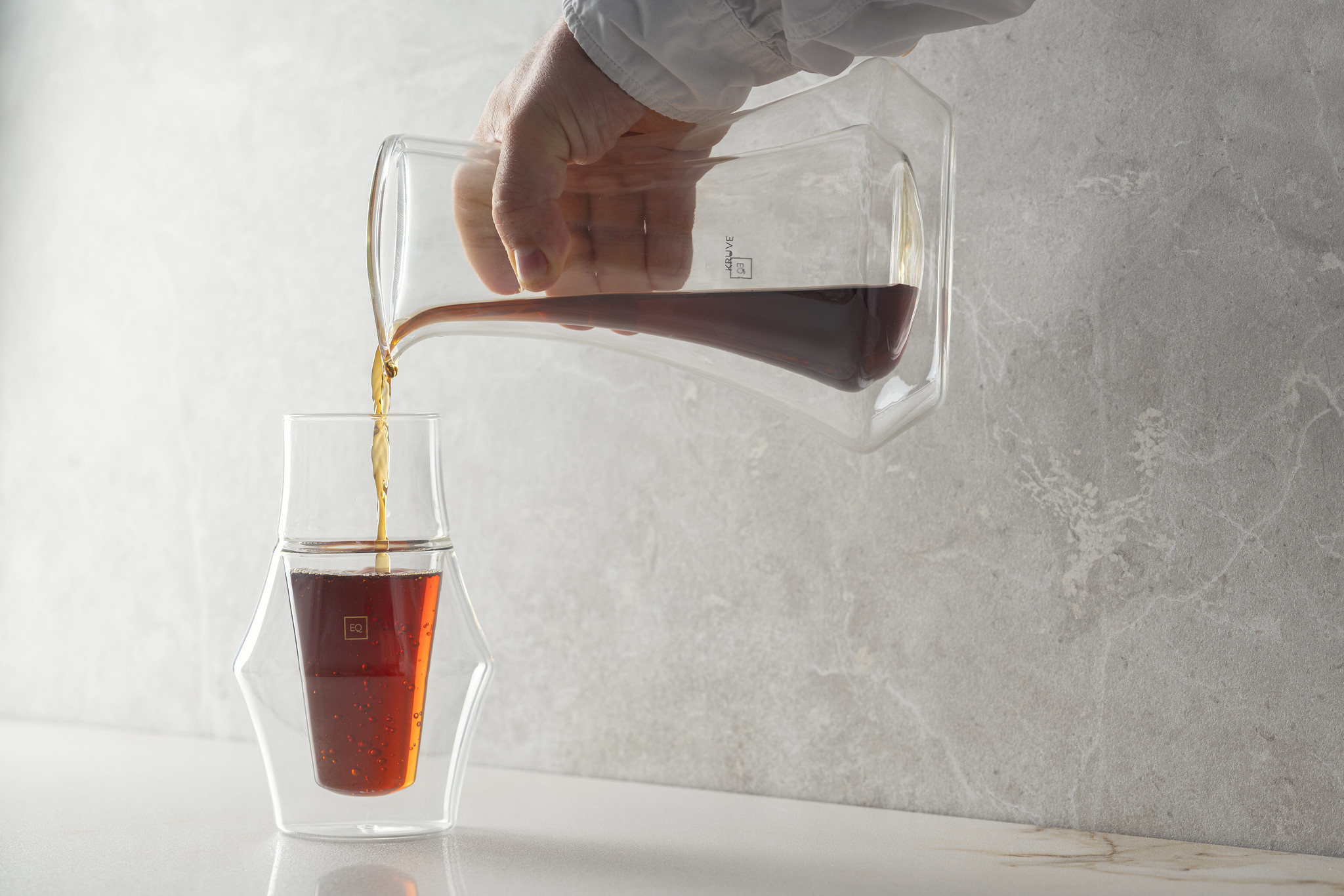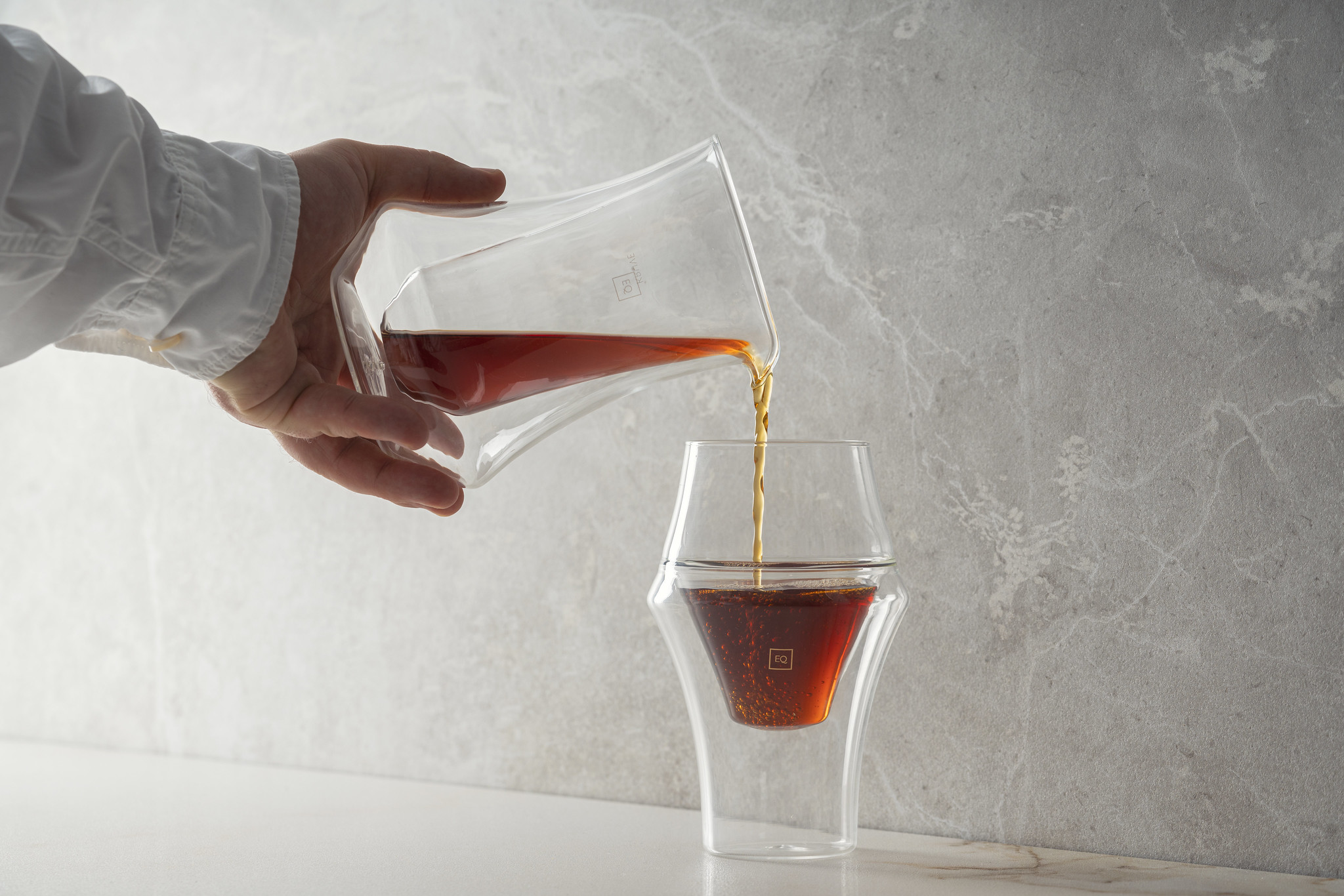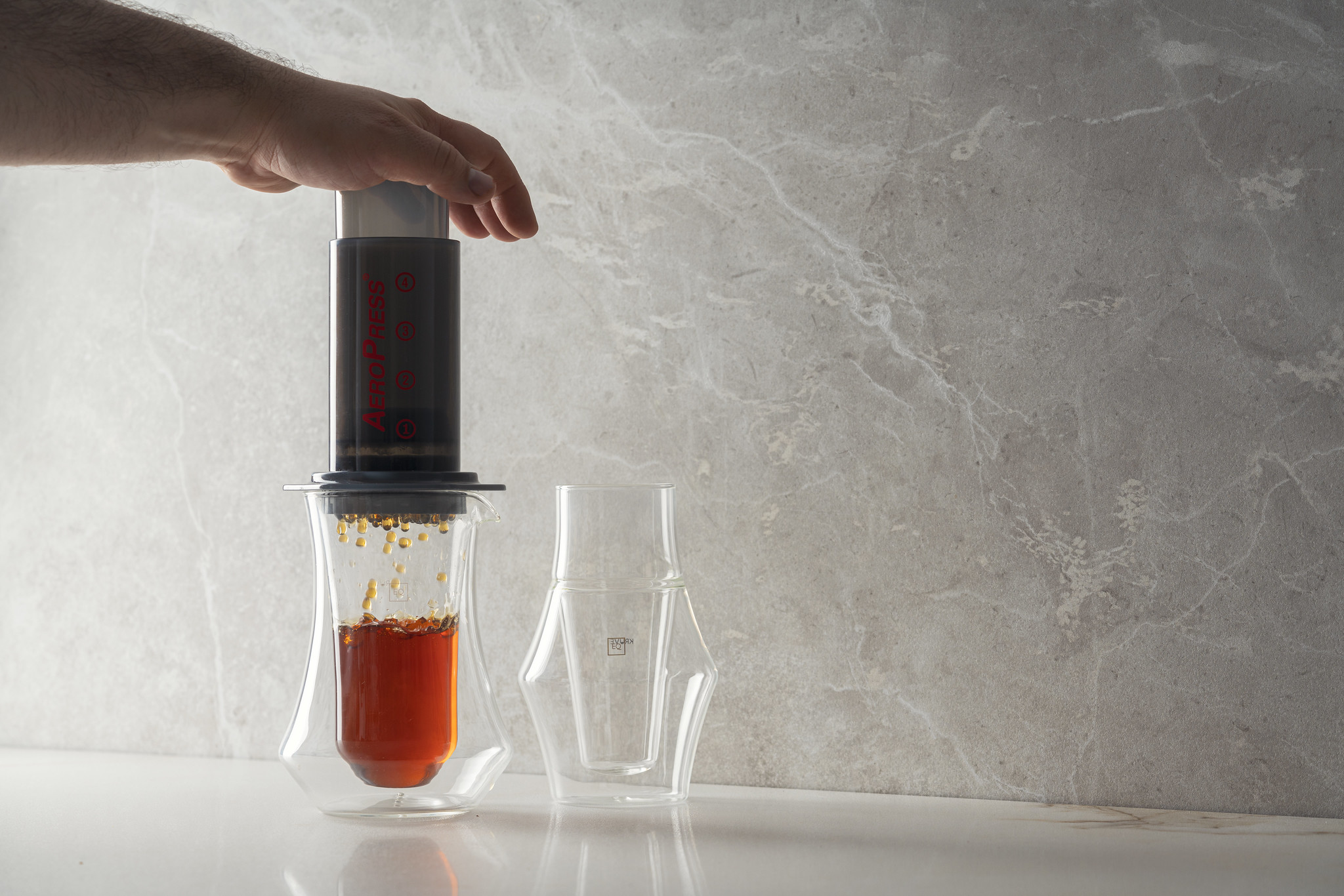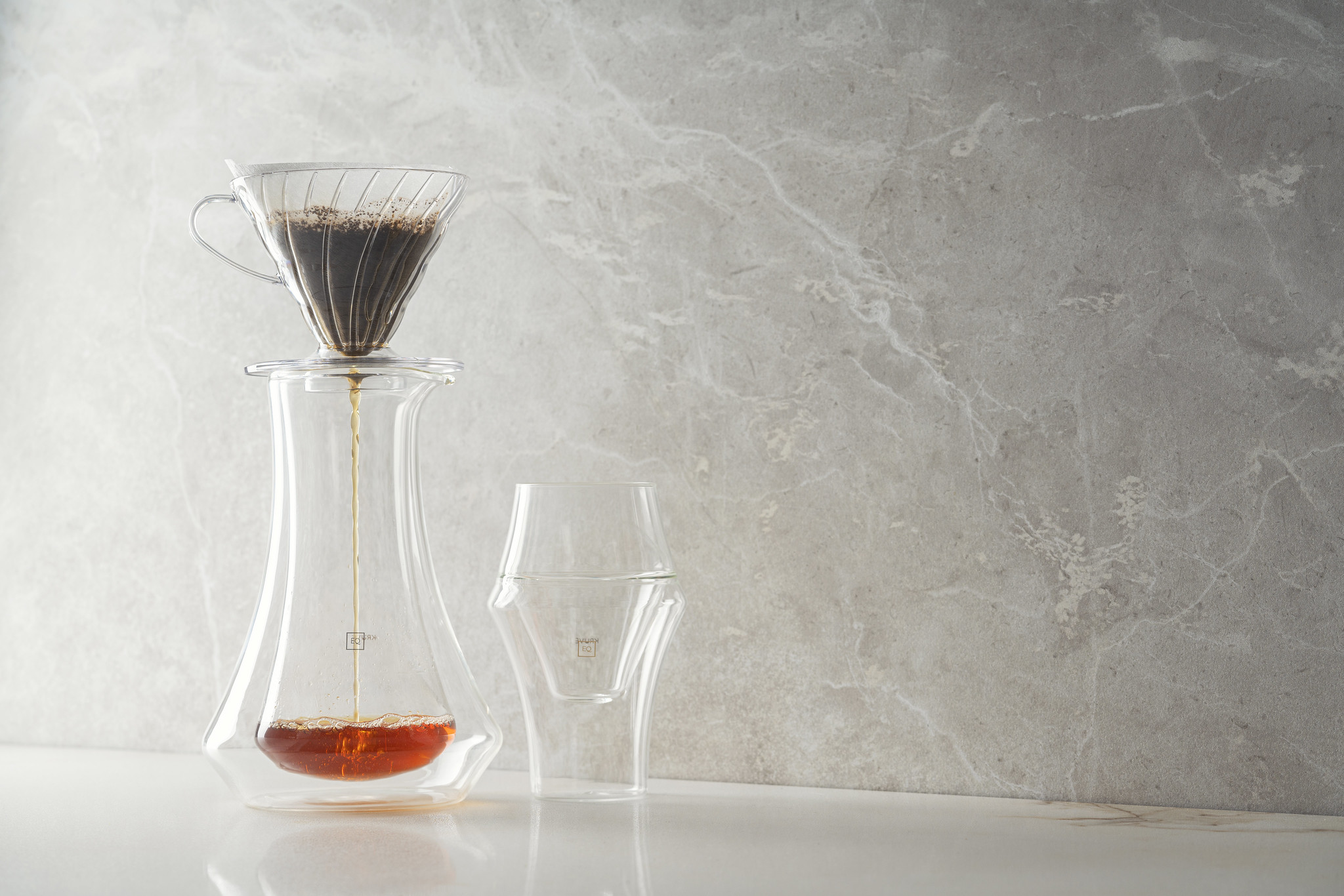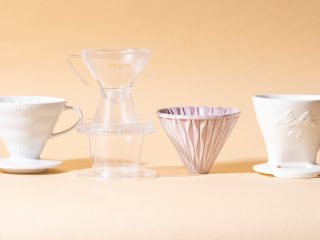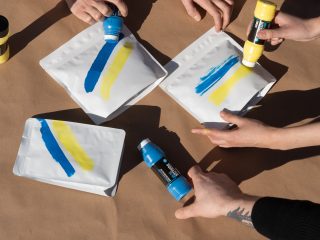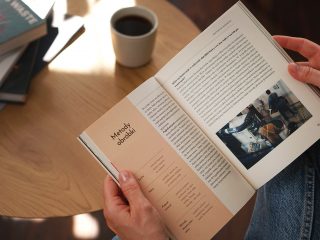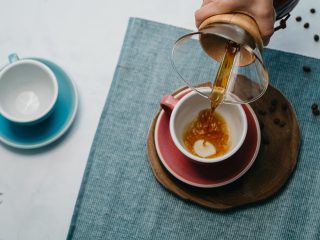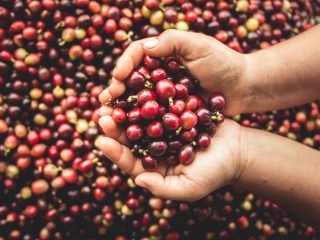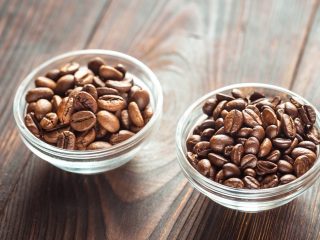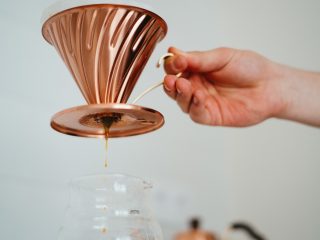The sensory world of smells, aromas and taste sensations is undoubtedly the lion’s share of coffee experiences. In addition to the quality of beans, water and the method of brewing, it is also important how the coffee is served. More precisely – what we drink it from. After all, will the wine taste the same when drunk from a bottle as from a glass selected specifically to release its bouquet?
The smell of coffee
For many people, the very smell of coffee is already stimulating and invigorating. Some even say that they only need to smell the coffee, they don’t need to drink it. Nevertheless, I strongly encourage you to taste coffee, especially when it’s properly prepared. Wine connoisseurs use glasses that make it possible to recognize the bouquet hidden in the drink and to aerate the wine before tasting. Who said coffee is not the same? Since the beans have a large dose of various essential oils, paying attention to the way you drink coffee can only increase its value. Coffee contains 3–4 times more volatile aromas than bread, 3 times more than fried beef steak, and 6 times more than strawberries! As you see, excluding your nose from the experience is a waste of an abundance of aromas. Most ordinary cups exclude or limit the participation of the sense of smell in tasting. On the other hand, traditional glassware used for drinking wine is not suitable for drinking coffee. Fortunately, the coffee market is developing and there are many conveniences, also as comes to the the drinking containers…
The shape does matter though?
So, how to serve coffee and what to serve it in? In the coffee “market” there are more and more attempts to create drinking containers that, like wine glasses, will allow you to enjoy the full bouquet of aromas hidden in coffee beans. As I wrote earlier, drinking coffee from wine glasses is not the best idea – they are not resistant to high temperature and do not insulate from the heat of the brew. Besides, we usually want our coffee warm, so it would be advisable that the cup also kept the coffee warm, so that we could enjoy it longer. Following these determinants: a shape that brings out aromas, heat insulation and temperature resistance, Kruve has created a line of glassware to enhance our coffee drinking experience. You can associate the company with the previously created coffee sifter with sieves in many weights – the Kruve Sifter. Now they have designed and created (crowdfunded) glass which is to increase our perception while drinking a stimulating beverage. Two different glasses – Excite and Inspire – are designed to enhance separate notes in the coffee, so that we can amplify or equalize what we consider important in the aroma of a given coffee.
Both of them, 150 ml each, allow your nose to participate in drinking coffee. They have double glass to insulate heat at the bottom of the glass (where you hold it) and single glass at the top, so that you can easily drink your coffee. This is important because when drinking from glasses made entirely of double glass, it is easy to misjudge the temperature of the contents and burn your tongue – oh, and the taste buds dislike burns very much. After such a “hardening” of the tongue, you will not feel the flavors fully for the next few hours. You can say that the glasses are identically opposite. Structurally, the first glass is an inverted version of the second. Each of them gives a different taste sensation.
Excite
The Excite glass has hidden its desire just like it hides its aromas inside the vessel. Due to its structure, the aromas of the coffee stay above the surface instead of “coming out” of the glass. This allows you to maintain a comprehensive blend of aromas that can be “tasted” with your nose, as it goes deep into the glass while you’re taking a sip. It’s a good idea to twist the coffee inside the glass, which is very easy thanks to the shape of the Excite. The surface of the coffee in contact with air is twice as large as in the case of the other glass. As a result, the coffee cools down noticeably faster in the Excite.
Moving on to taste – the wide rim of the glass makes you taste the liquid with a larger surface of the tongue, actually with the entire interior of the mouth. Due to the increased oxidation (air entrainment), the coffee tastes sweeter and the aromas built above the surface appear more complex. It will be a good idea to pair the Excite glass with coffees from Guatemala, Brazil or Colombia. Of course, nothing prevents you from trying Kenya from this glass. This is the idea behind the glasses – what to drink coffee in, if not in a glass that allows you to discover your preferences and control the enhancement of specific aromas? It’s enough to say – a coffee adventure.
Inspire
The Inspire glass has just “inspired” me with its ability to strongly enhance the flavor. It allowed me to feel the aromas of floral and citrus notes more strongly. It’s a good idea to pair this glass with a comprehensive coffee from Kenya or airy Ethiopia from washed process. In addition, the aroma in its case is somehow thrusted from the glass towards the nose. The smaller contact surface of the coffee with air allows the drink to stay warm in the glass longer. Due to the narrow rim, smaller portions of coffee are poured out during tasting, resulting in a directional contact with the surface of the tongue. This increases the perceived acidity, also by reducing coffee aeration in this version of the glass.
In the same line – Kruve EQ – the manufacturer also designed and created decanters: a 300 ml Kruve Pique, and a 600 ml Kruve Evoke. The EQ product line has been recognized by SCA and awarded in 2019 with the “Best New Product Award” and the “Design Lab Award”.
We spruce up coffee – it’s time for tests
Each of us feels as many (or almost as many) aromas in coffee. We just cannot put names on some of them. You can change it by trying new, different coffees and tasting them consciously. So, it’s time for the sensory tests of Kruve glasses. I used both of Kruve EQ glasses and a regular glass-mug. I brewed my coffee in a classic Hario V60 dripper using 500 ml of water for 30 g of coffee, brewing time was 3 minutes and 30 seconds.
In the first test, I used Kenya roasted by Kalve. While drinking from an ordinary mug I sensed there mainly cherries, whereas in both Kruve glasses I suddenly sensed cinnamon and pepper. In the narrow Inspire glass I sensed strong notes of pepper and some of the spicy paprika. In the wide Excite glass, the aroma was mixed, you could smell cherries with pepper and cinnamon. The differences are really noticeable!
The Inspire version has concentrated all the fruity notes, which in the Excite version have been slightly flattened at the expense of increased sweetness. Juxtaposing the coffee in both glasses, I would compare the feelings to photos and pictures. The Inspire glass gave the impression of a high-contrast photo, with a visible emphasis on the histogram – a correctly exposed place. Light and dark places – other notes – have been cut off. A wide glass is a photography with a smaller contrast, properly exposed in the entire range. In my opinion, the narrow Inspire version offered me more aromas and this coffee tasted better in it.
In the next take, I used Brazil Fazenda Barreiro roasted by the Scandinavian roaster Solberg & Hansen. This coffee is roasted slightly darker than Kenya, dominated by notes of nuts and chocolate, as we read from the sensory profile on the packet. What was it really like? In the glass designed to emphasize the sweetness – Excite – it actually came to the foreground, the taste was full, with a dominant chocolate against a delicate background of nuts and fruits far back. In the narrow Inspire the taste was a bit rough, the fruit was more evident, the aroma and taste sensations were more pronounced. The taste of the brew was slightly less sweet. In this case I liked the coffee from the Excite glass better, because of its complexity and sweetness.
Both glasses don’t spare coffee. What does it mean? In both versions, as the drink cools down, it is easier to sense defects in coffee, roasting or brewing. While cold coffee in an ordinary mug may taste similar to warm coffee, or perhaps you can sense some frail, undesirable notes, in the case of the EQ glasses, these notes are enhanced. This is both an advantage, as it allows you to correctly evaluate coffee, and a disadvantage – incorrect brewing gets more noticeable.
Wash it here, polish there…
How to serve coffee in Kruve glasses is one thing, but washing them afterwards is another. The only moment that gave me a bit of a heart attack was washing the glasses. Due to the material they’re made of – glass, each time I washed them, I imagined the glass shattering into small pieces (the memory of a broken Chemex comes back like a flashback). Of course, nothing terrible happened, but cleaning was stressful…
As for washing – according to the manufacturer you can use the dishwasher, but I recommend washing the glasses by hand. The set includes a black cloth to polish the glasses after washing them so that no stains are left – and they are easy to spot o the glass surface. You can use the mentioned cloth or… rinse the glass at the end of the washing with filtered water. Water stains are most often caused by minerals from tap water depositing on the glass surface.
Summary
Are Kruve glasses worth buying? The answer is, as always: it depends. If you’re no longer a specialty coffee rookie, and you know the influence of the grind size, temperature and weight on the taste of coffee, you will surely appreciate this equipment. Thanks to Kruve glasses, you will feel more aromas, learn to recognize them in coffees and understand how small differences in brewing can change the taste of coffee. What you may find useful is a set of aromas – Le Nez du Café from Jean Lenoir. As you learn to identify separate aromas, in time you’ll be able to recognize them in coffee. Glasses and an aroma kit can be a perfect starting set to sail the wide and pleasant waters of the coffee sensory world. However, if you are just starting your adventure with coffee – wait with the purchase. The glasses can reveal notes that have been caused by improper brewing. Don’t be discouraged though – do a bit of reading on coffee, test different settings, and once you are familiar with the world of stimulating beans, you know where to look for the “extension”. Good luck and lots of pleasant aromas in your coffees!

